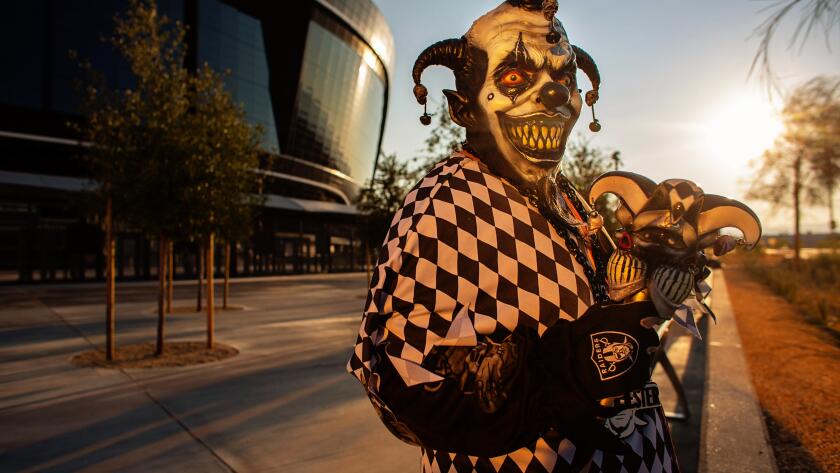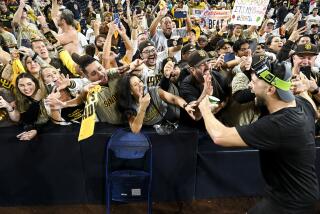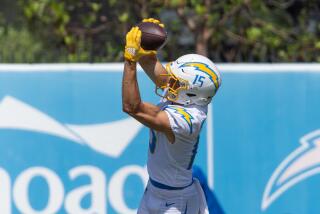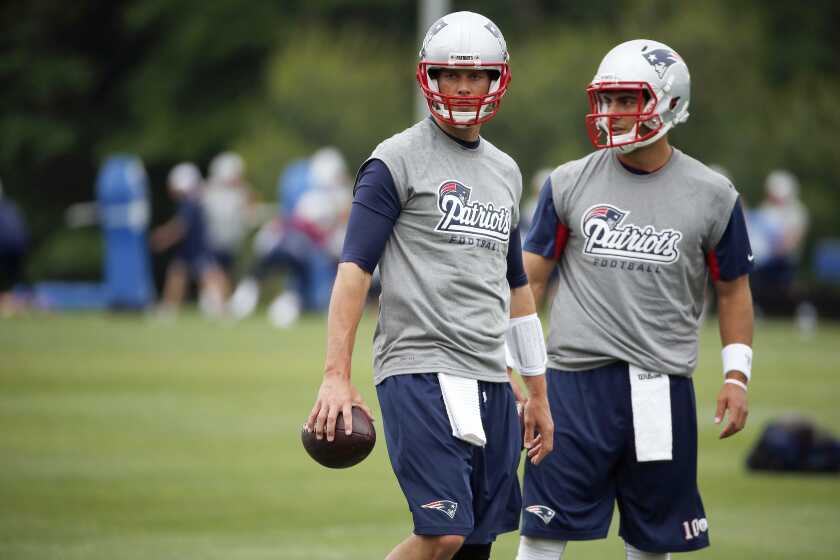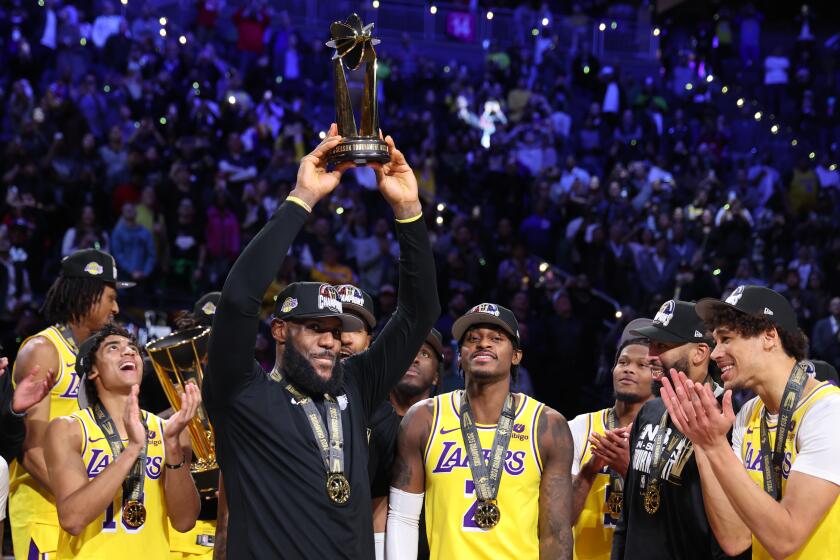Raiders’ move to Sin City hasn’t cast their die-hard fans into the Black Hole
When the Raiders moved to Vegas, their diehard fans didn’t stay away. In fact, they are more dedicated than ever.
LAS VEGAS — In a city with more than 50 wedding chapels, Anthony Herrera helped orchestrate an unusual marriage proposal by one of his best friends — at the front gates of the Death Star.
That’s the nickname for Allegiant Stadium, the glistening, new, jet-black home of the Las Vegas Raiders — the favorite team of Herrera and his friend. Herrera loves the Raiders so much, this summer he moved from Inglewood to Las Vegas.
The proposal coincided with a planned music video shoot — about 100 other superfans dressed in exotic Raiders-themed costumes descended on the stadium’s entrance on a 108-degree afternoon.
Herrera, nicknamed “Raider Jester,” wore his signature snarling clown mask and ripped checkerboard outfit. When his friend rose from one knee after his girlfriend said “Yes,” everyone erupted in “RAIDERS!” cheers.
It epitomized the enthusiasm of the Raiders fanbase. As the team prepares for its first season in Las Vegas after leaving Oakland a second time, the faithful in Southern California stay devoted.
For better or for worse, in sickness and in health.
“The passion is indescribable,” said Amy Trask, the Raiders’ former chief executive. “It is a sincere, strong, incredible passion. I can’t explain the why — I think it’s more appropriate for the fans to speak to that — but the passion is tremendous and it is global.”
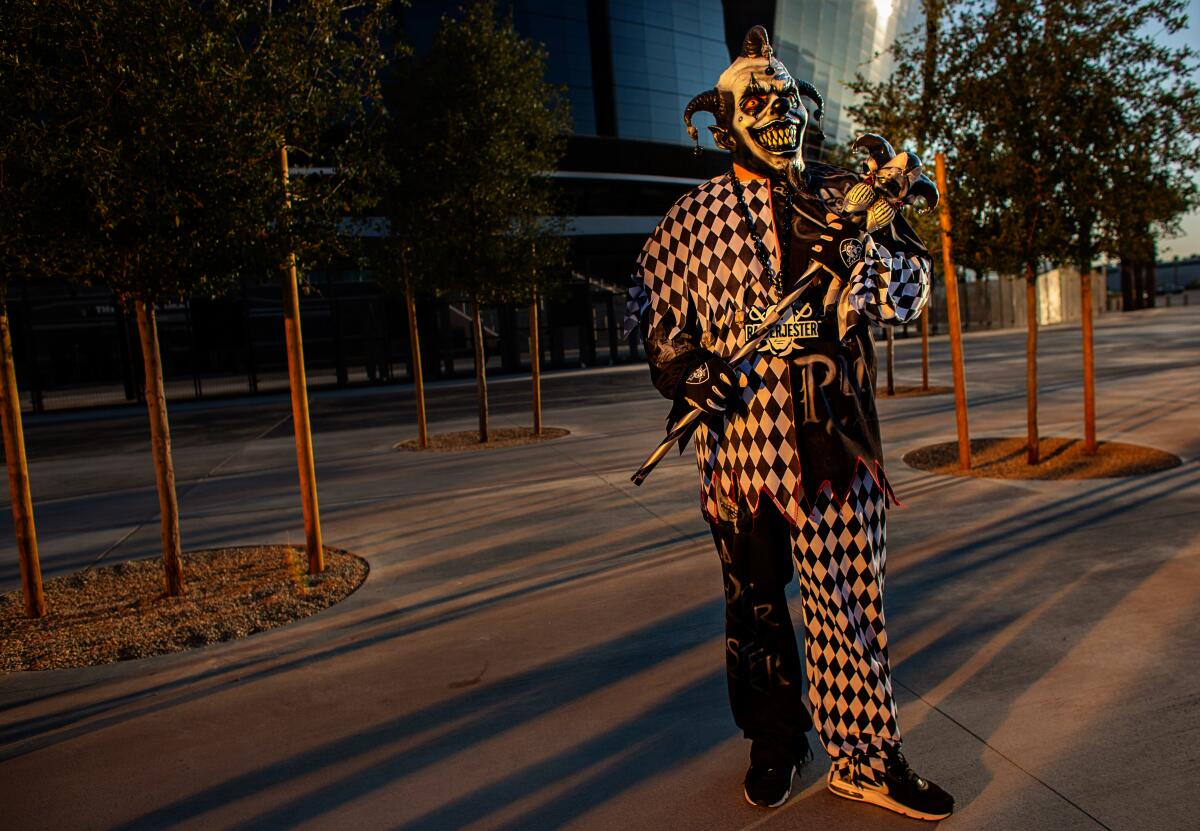
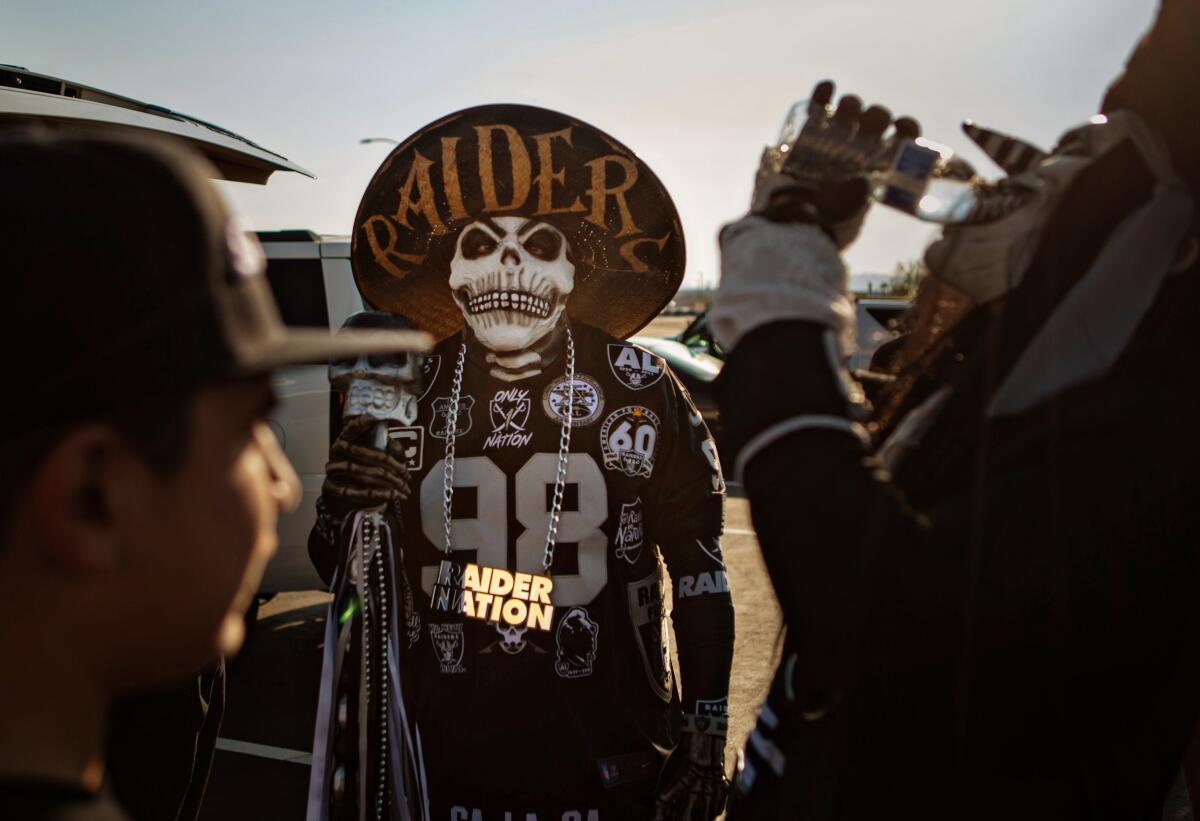
Los Angeles has two NFL teams, and the Rams have roots that date to the 1940s. But even a quarter-century after leaving L.A., the Raiders still can make a case for being the No. 1 team in the market.
At the Chargers’ last home game in December, Raiders fans took over Dignity Health Sports Park. The noise seemed to fluster Chargers quarterback Philip Rivers.
Raiders fans similarly overwhelmed a 2018 preseason game against the Rams at the Coliseum, the Raiders’ former home.
Some grew up as fans during the team’s first stint in Oakland in the ’60s and ’70s. Winning three Super Bowls helped. Some younger fans say rappers such as Ice Cube, who sported the team’s apparel, drew them in during the ’80s and ’90s.
Longtime owner Al Davis’ commitment to diversity by hiring the NFL’s first black coach of the modern era inspired fans, others said. The team also was the first to draft a Black quarterback in the first round and to hire a woman as CEO. Nancy Lough, a Nevada Las Vegas professor specializing in sports marketing, said the Raiders succeeded with that messaging, and it will continue to resonate in Southern California, one of the most diverse regions in the country.
“The Raiders brand is still one of the strongest in the NFL and the DNA of the brand is known.” she said. “I don’t know of many other brands that resonate with such a wide range of ages, races, genders and ethnicities.”
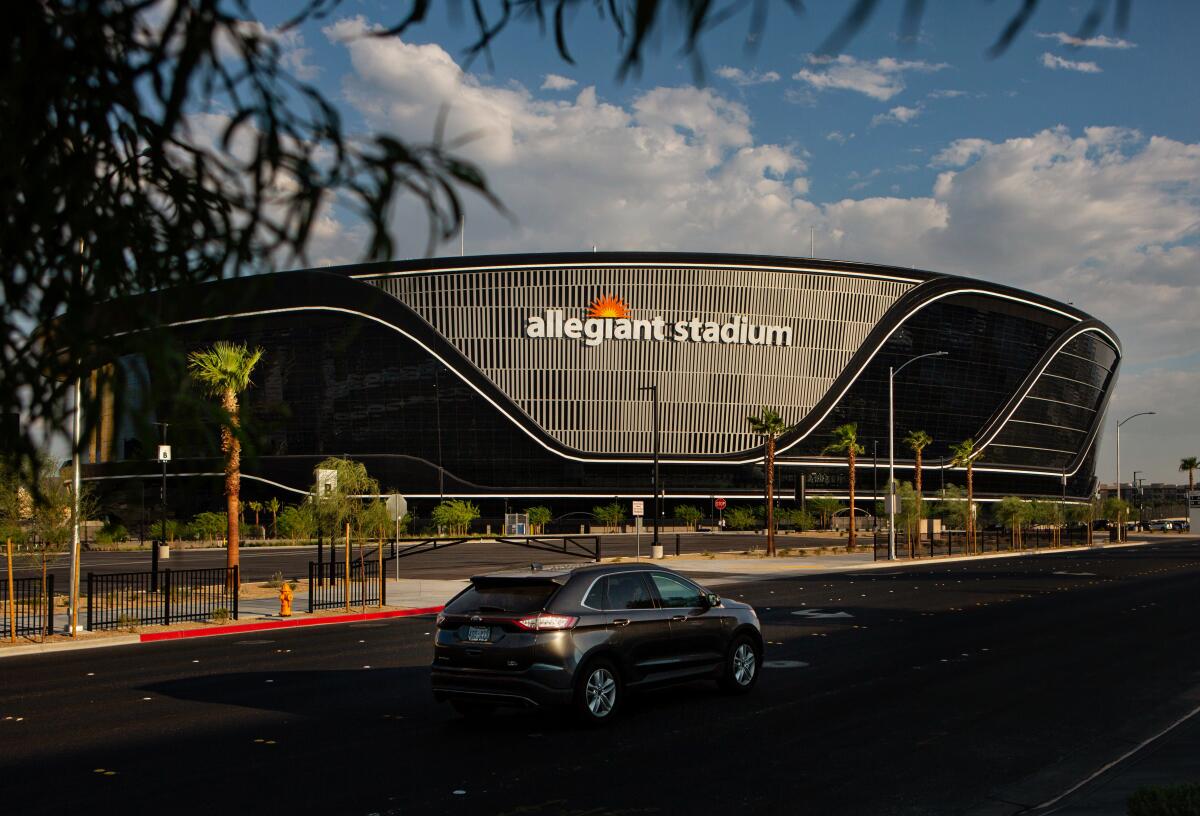
Herrera, 42, a lifelong fan, adopted the “Raider Jester” alter ego in 2018, saying the nightmarish circus attire fit his class-clown personality.
After he and his fiancee started the four-hour journey home from the Vegas photoshoot — driving though the winding, hilly interstate surrounded by a sea of dry brown landscape — she asked if he wanted to move there.
“I let out a big Kool-Aid smile when she said that,” he said.
They moved July 1 into a two-story townhome located 15 minutes from Allegiant Stadium.
“I had to follow my heart,” Herrera said, “and no one can question that.”
Fans such as Herrera weren’t always common, said Tim Brown, the Raiders’ Hall of Fame wide receiver. Brown played seven seasons in Los Angeles and nine in Oakland. He said L.A. fans initially viewed the team as an afterthought, prioritized behind the Lakers and Dodgers.
But the Raiders’ popularity grew, with seven playoff appearances and a Super Bowl victory in 1983, before they moved back to Oakland in 1995.
Twenty years later, as the team contemplated a move back to L.A., that passion still burned in Southland fans.
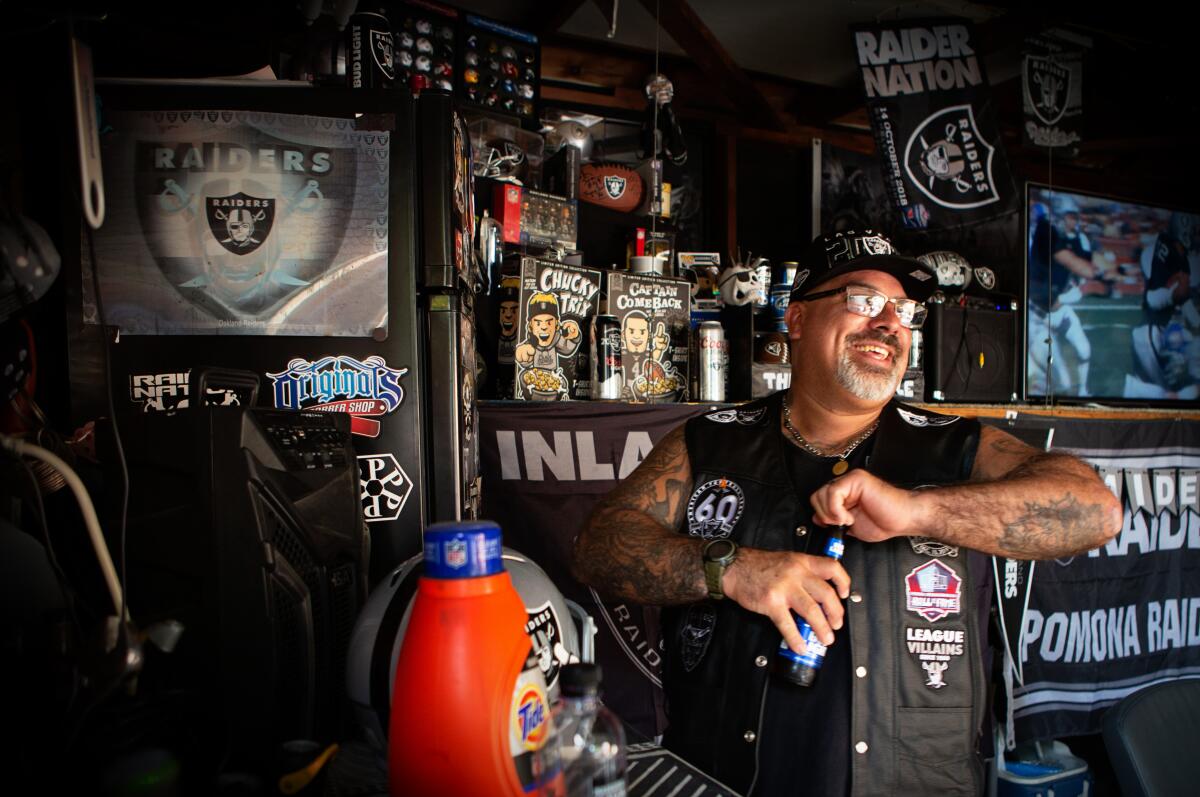
The Raiders announced in 2015 a plan to build and share a stadium with the Chargers in Carson. But that bid lost in 2016 to a competing proposal by the Rams to build a two-team stadium in Inglewood. The Chargers, not the Raiders, were given approval to relocate, and they will share the new $5-billion SoFi Stadium with the Rams starting this season.
“That situation was a slap in the face to Mark Davis,” Brown said of the Raiders’ current owner. “I think the organization said, ‘Man, let’s get out of California and do something different.’”
NFL owners in March 2017 approved the Raiders’ relocation to Las Vegas. The team did not respond to requests for comment, but Brown said he thinks the move “completely reinvigorates” the fans, comparing enthusiasm to when the Raiders returned to Oakland.
But for Wayne Mabry, arguably the most-recognizable Raiders fan, the move was a “kick in the teeth.” Nicknamed “Violator,” he dressed in black-and-silver face paint, spiked shoulder pads and leather boots for games for nearly 30 years, but at 63 he won’t be able to attend every home game anymore.
“This is a new era, and I’m looking forward to the younger generation being able to see and experience the memories I have,” he said.
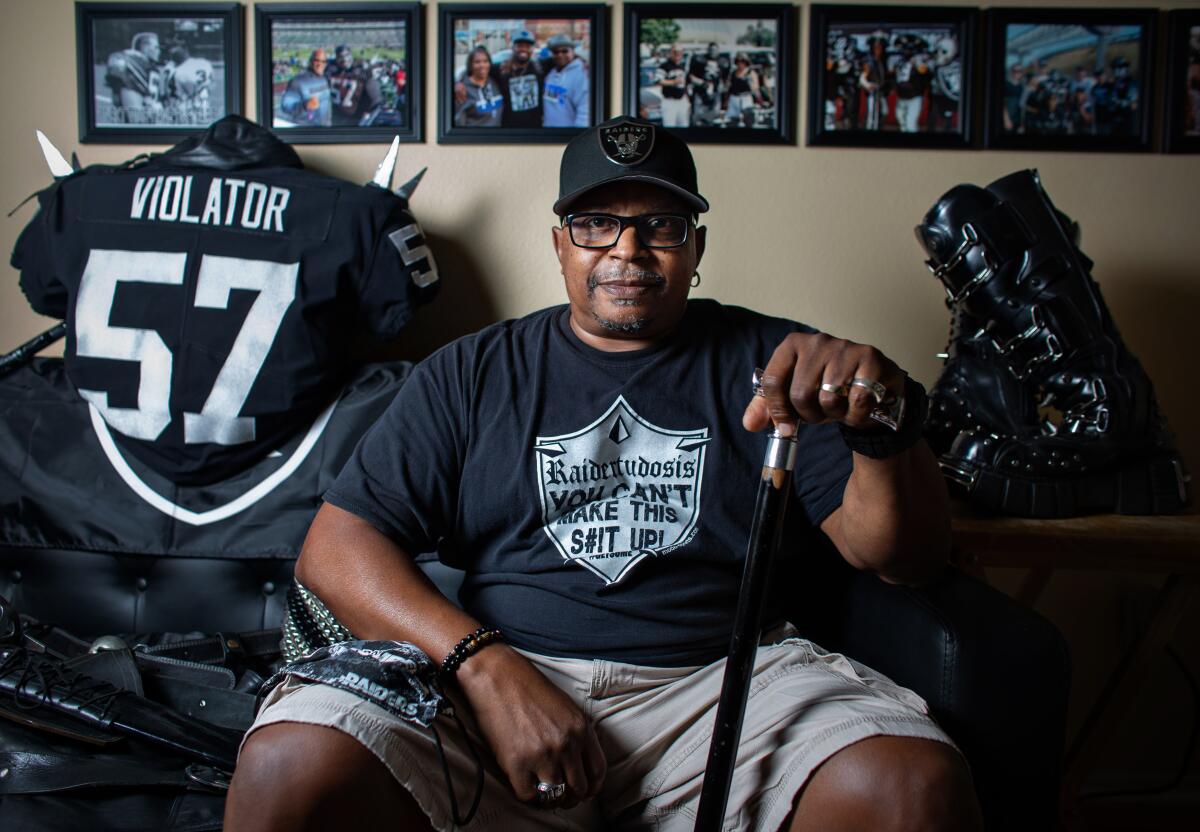
Ray Allala, 43, hopes his 14-year-old twins will be part of that. When his wife was pregnant, he played the Raiders’ theme song, “Autumn Wind,” over her stomach so the unborn babies could hear it. He keeps their infant Raiders pajamas in the garage of his home in Riverside, which also holds Raiders-branded laundry detergent, beer cans and ice cream containers.
Las Vegas, he said, is a perfect fit.
“We’re the bad boys of football and now we’re in Sin City,” said Allala, president of the Inland Empire Raiders Booster Club. “I wish things could have worked out in Oakland or L.A., but we have a great situation.”
Lough said she expects the majority of fans at games to be Las Vegas locals, followed by those from Southern California. Mabry, who lives in Moreno Valley, said it’s inevitable.
“Whether Vegas is ready for us or not, they better get ready,” he said.
The move hit a major snag with the COVD-19 pandemic, however, and last month the Raiders announced fans won’t be allowed at Allegiant Stadium this year.
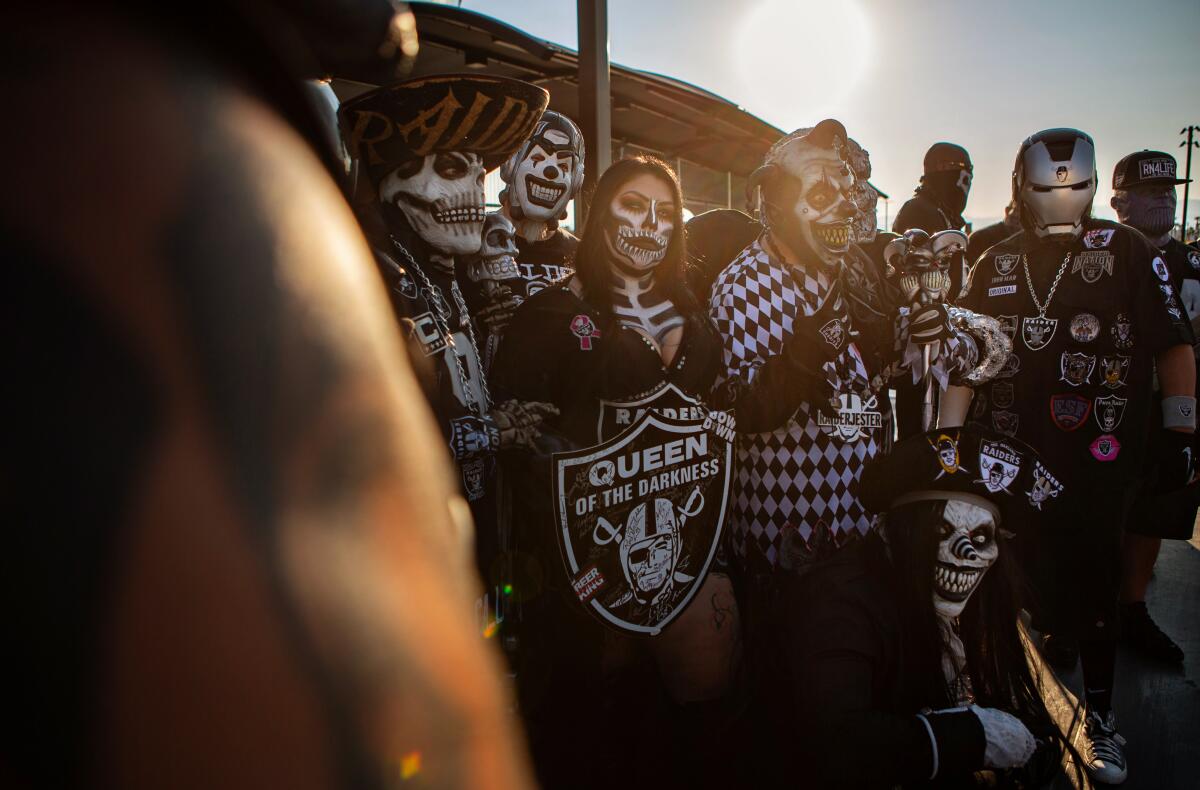
The Raiders’ eight home games still present opportunities for hotels and other businesses.
Tourism increased by more than 370,000 visitors between June and July as COVID-19 restrictions eased, indicating fans still might travel. Nearly one in five visitors to the city in 2019 was from Southern California, according to the Las Vegas Convention and Visitors Authority.
Jared Rapier, regional vice president of hospitality marketing for Caesars Entertainment — one of the largest resort chains in Las Vegas and the first founding partner of Allegiant Stadium — said they will host player and cheerleader appearances. Stephen Thayer, general manager of the STRAT Hotel, Casino and Skypod, said his property remodeled certain spaces to install more TVs for game viewing.
Las Vegas is on deck to host the Pro Bowl in January and the 2022 draft. H. Fletch Brunelle, vice president of marketing for the LVCVA, said a Super Bowl is next on his wish list.
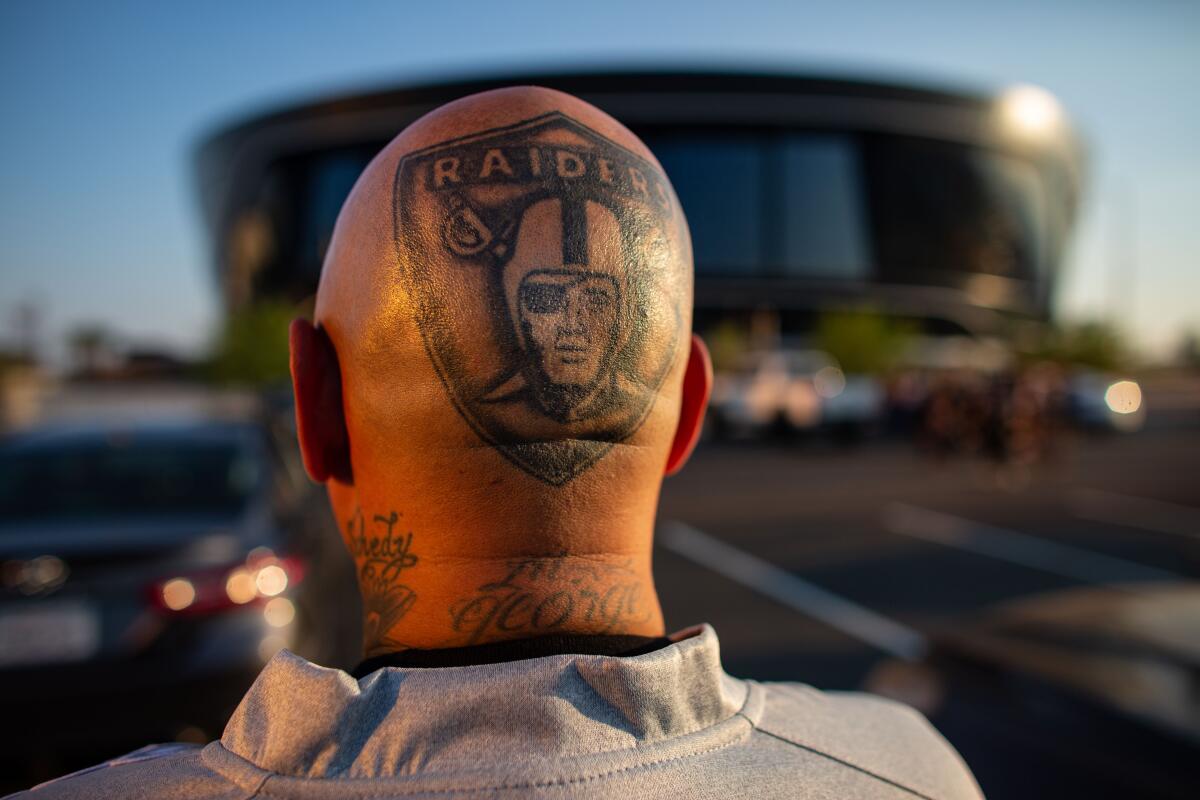
Because of the other entertainment the city offers — concerts, fights and gambling — Brunelle said Las Vegas will conduct a unique game-day weekend. He’s confident they can handle the Southern California surge.
“The challenge for us is how we don’t screw this up,” Brunelle said.
More to Read
Go beyond the scoreboard
Get the latest on L.A.'s teams in the daily Sports Report newsletter.
You may occasionally receive promotional content from the Los Angeles Times.
